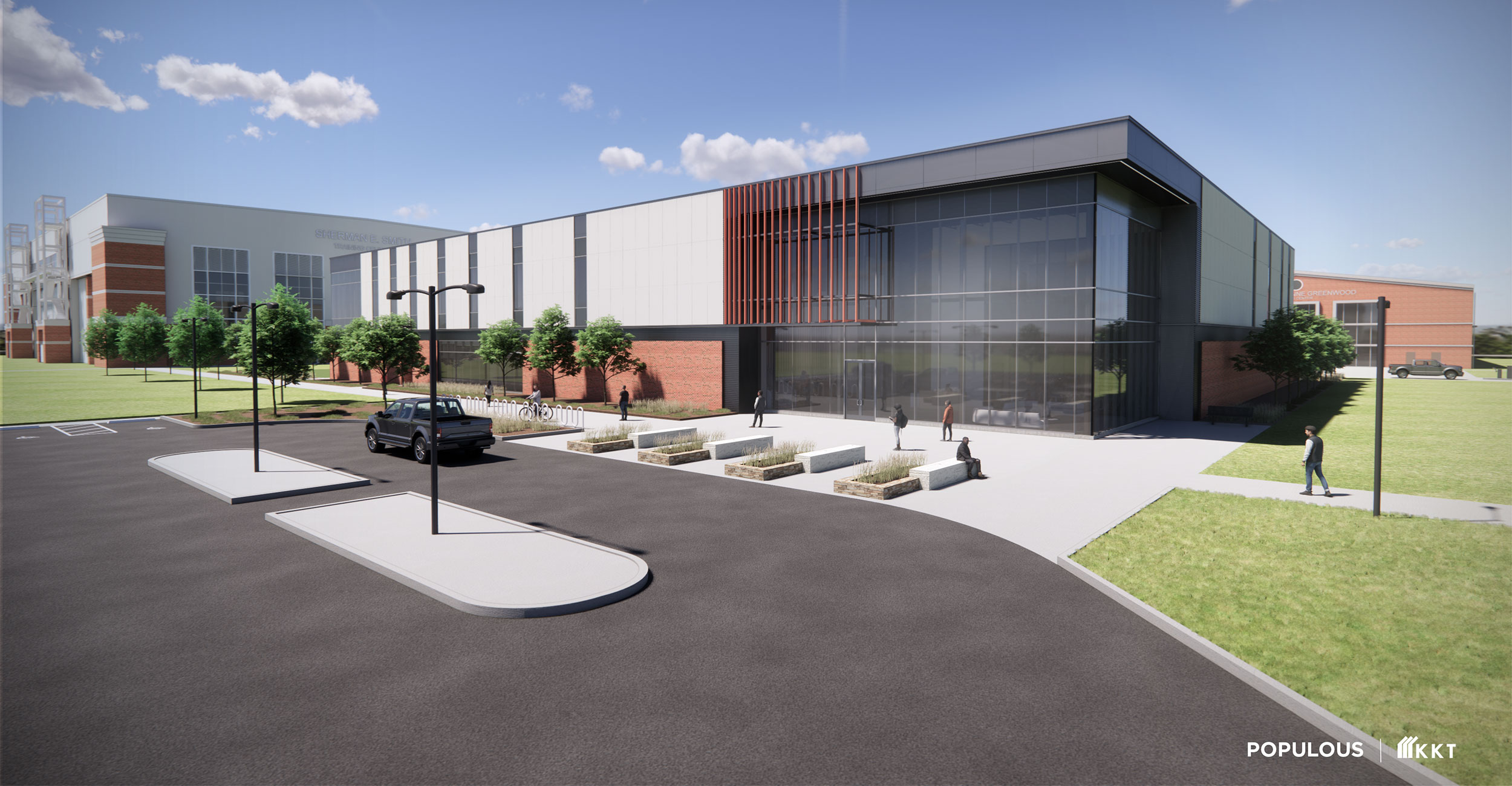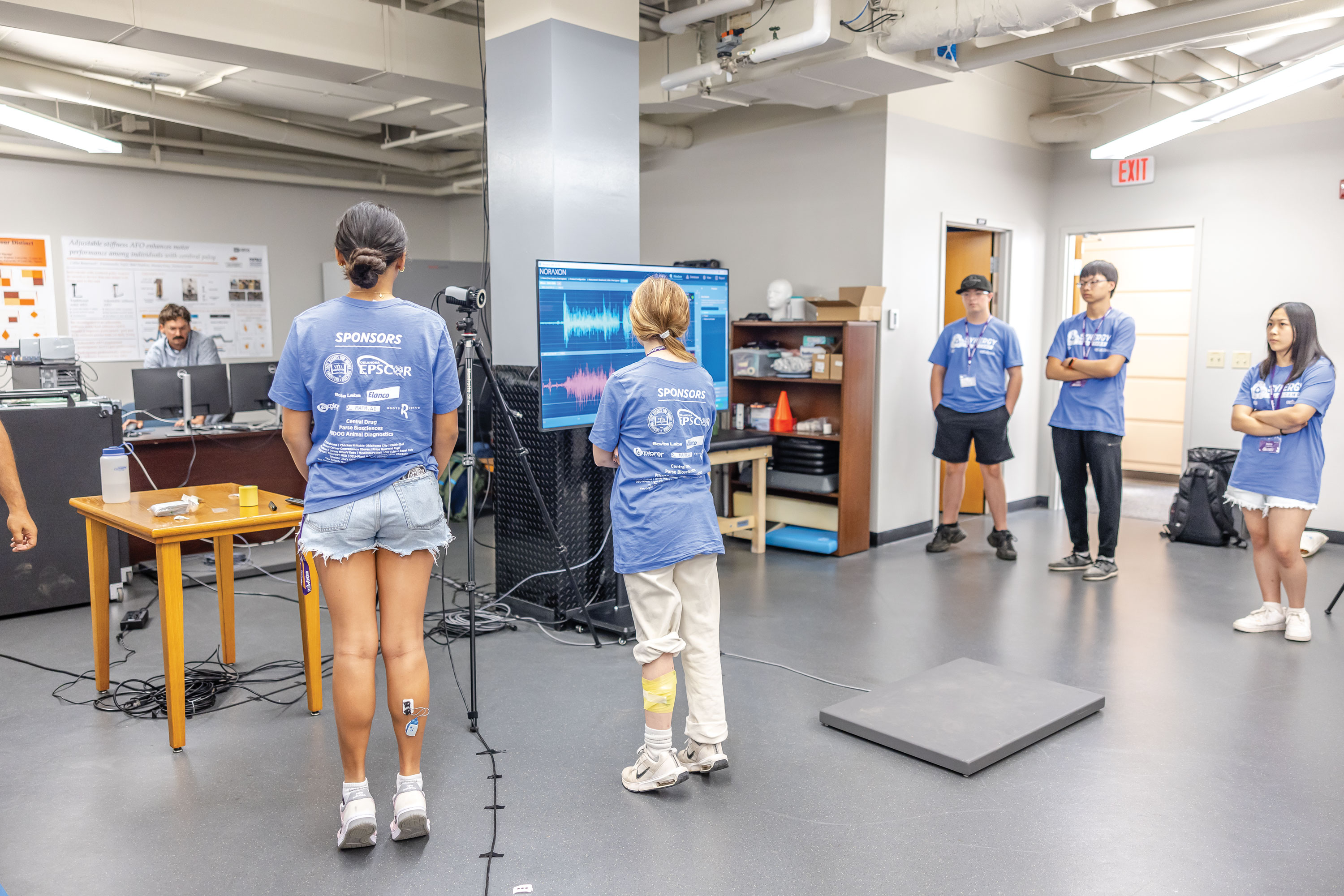
New facility to elevate human performance research across OSU
Tuesday, September 9, 2025
Media Contact: Sydney Trainor | Communications and Media Relations Specialist | 405-744-9782 | sydney.trainor@okstate.edu
At the Oklahoma State University Human Performance and Nutrition Research Institute, researchers see every person as an athlete — regardless of age or fitness level.
The researchers’ goal is simple but transformative: to improve health outcomes through research, education and performance-based solutions.
HPNRI will soon have a new home to conduct groundbreaking discoveries — the Boone Pickens Human Performance Innovation Complex.
Named after the late T. Boone Pickens, a legendary businessman and mega-philanthropist, this building will advance HPNRI’s commitment to conduct cutting-edge research, educate the next generation of health and wellness professionals, and provide evidence-based solutions to improve human performance and nutrition.
Funded by a $50 million investment from the state of Oklahoma through the American Rescue Plan Act and a $25 million allocation from the Boone Pickens legacy gift in addition to several private gifts, the complex represents a landmark investment in OSU’s land-grant mission. Additional fundraising is ongoing. Architects are finalizing the design and construction is scheduled to begin in late 2025.
“HPNRI is a signature research institute at OSU,” Vice President for Research Kenneth Sewell said. “The Boone Pickens Human Performance Innovation Complex will bring together OSU faculty affiliates of the institute, institute staff scientists, and external partners to create new synergies in service of this bold vision.”

“The vision of HPNRI is to transform health through performance,” HPNRI Rick and Gail Muncrief Executive Director Lance Walker said. “The idea is a facility that would allow us to bring together the experts of everything performance into one space.”
Walker said this building is a catalyst and resource for researchers to work together as a community from around the world.
“We want to set up a building that becomes a space for us to work in a transdisciplinary fashion — a mixed approach to improve performance,” Walker said. “The overall concept is performance leading to health, and we feel like the building needs to optimize our ability to help every Oklahoman eat better, sleep better, move better. At the end of the day that’s what it’s all about.”
This building will also serve as a headquarters for collecting data that can be leveraged by other scientists not physically on location. In Oklahoma, the work done in this facility will be used to impact and improve the lives of people in all 77 counties.
Walker said the facility will serve as an interdisciplinary hub, allowing researchers to access and use collected data remotely — even if they never set foot in the building.
The building design is non-traditional with a variety of mixed labs.
The facility will include metabolic, kinetic, kinematic, biomarker, and body composition labs. It will also house a performance and training lab — a real-world training environment designed to replicate the most effective training tools for young athletes, military personnel or the general public. This will allow the knowledge gained to be translated into practical applications for athletes of all sorts.
“Think about a living lab — where you can test, train, translate — all in one place,” Walker said. “It’s kind of like a factory, with everything happening in the same space. It’s like rapid prototyping. We’re going to create a prototype, try something, test it, tweak it and then get it out — translate it and find a way to share it. All of that happens under one roof.”
This harmonious set up will include state-of-the-art equipment to help test how someone moves, burns calories and even more on an individual level.
“The lab is very intentional. This environment is designed to bring together people, tools and multiple modalities in a contiguous, unified space without losing the rigor of scientific inquiry,” Walker said. “To be honest, not many people have even attempted this, let alone found success with it.
“We’re going to be something of a pioneer in trying this, not to mention the training itself. The actual training space is adjacent to and integrated with the labs. So instead of saying, ‘Come into the lab,’ it’s all happening here. It’s going to be messy, it’s going to be gray, but it’s going to be a beautiful mess.”
Photos by: Ellie Piper and Art Provided
Story By: Sydney Trainor | Research Matters Magazine
